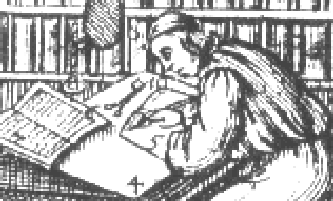 |
Text Encoding Initiative |
The XML Version of the TEI Guidelines<witDetail> |
| <witDetail> | gives further information about a particular witness, or witnesses, to a particular reading. | |
| Attributes | (In addition to global attributes and those inherited from notes) | |
| Example |
|
|
| Note |
The <witDetail> element should be regarded as a specialized type of <note> element; it is synonymous with <note type='witness detail'>. It differs from the general purpose <note> in the omission of some attributes seldom applicable to notes within critical apparatus, and in the provision of the wit attribute, which permits an application to extract all annotation concerning a particular witness or witnesses from the apparatus. |
|
| Module | Declared in file teitc2; Additional tag set for Textual Criticism: enabled by TEI.textcrit | |
| Class | notes | |
| May contain | #PCDATA abbr add addSpan address alt altGrp anchor app bibl biblFull biblStruct c caesura camera caption castList cb certainty cit cl corr damage date dateRange dateStruct del delSpan distinct emph expan fLib figure foreign formula fs fsLib fvLib fw gap geogName gloss handShift hi index interp interpGrp join joinGrp label lang lb link linkGrp list listBibl m measure mentioned milestone move name note num oRef oVar orgName orig pRef pVar pb persName phr placeName ptr q quote ref reg respons restore rs s seg sic soCalled sound space span spanGrp stage supplied table tech term text time timeRange timeStruct timeline title unclear view w witDetail xptr xref | |
| May occur within | ab add admin argument body camera caption case castList cell colloc corr country damage def descrip dictScrap div div0 div1 div2 div3 div4 div5 div6 div7 docEdition emph entryFree epigraph epilogue etym figDesc foreign form gen gram gramGrp head hi hyph imprimatur item itype l lang lbl lem meeting metDecl mood note number orth otherForm p per performance pos prologue pron q quote rdg ref region rendition seg set sic sound stage stress subc supplied syll tagUsage tech title titlePart tns tr trans unclear usg view wit witDetail witness writing xr xref | |
| Declaration |
<!ELEMENT witDetail %om.RO; %paraContent;>
<!ATTLIST witDetail
%a.global;
target IDREFS #REQUIRED
resp CDATA #IMPLIED
wit CDATA #REQUIRED
type CDATA #IMPLIED
place CDATA "apparatus">
|
|
| See further | 19.1 The Apparatus Entry, Readings, and Witnesses | |
Up: 35 Elements